Thomas Daniels Archaeological Site
An Early 18th-Century Connecticut Homestead
Personal Items
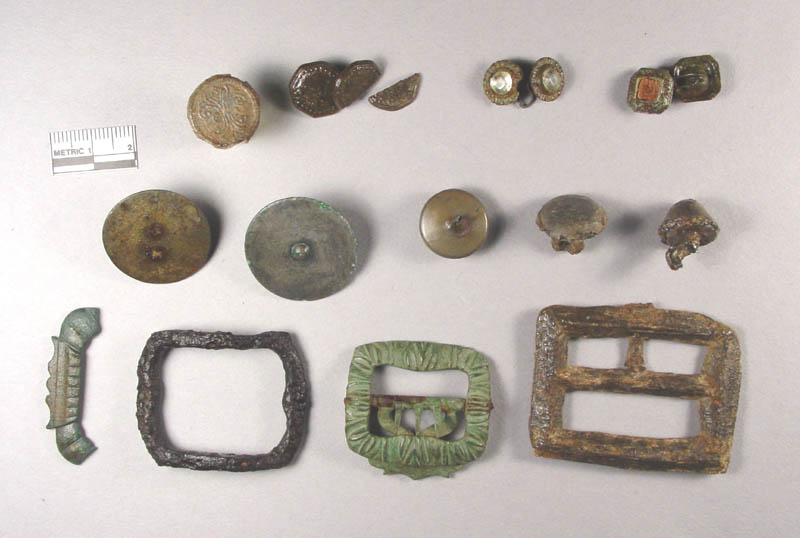
|
|
Top row left to right is a pewter button with a
fleur-de-lis design and three pairs of cufflinks.
Middle row is a brass button, a tin-washed button,
a brass button and two pewter buttons. The bottom
row is a brass shoe buckle frame fragment, an iron
shoe-buckle frame, a brass knee buckle and a
pewter buckle which appears to be entirely
decorative. Click to enlarge.
|
A wide variety of personal items were recovered during the excavations.
Buckles from the site include knee buckles, which men used to hold up their stocking
when wearing breeches, and shoe buckles.
One plain pewter buckle, which was entirely decorative, with no moveable parts, may have been for a hat.
The buttons from the site included small and simple ones cast from pewter and larger ones made of brass disks.
One particularly decorative pewter button has a fleur-de-lis image on it.
Men’s cufflinks were typically decorated with faceted glass gems or with embossed or engraved designs on the face.
Click on the thumbnails below for close-ups.
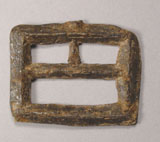


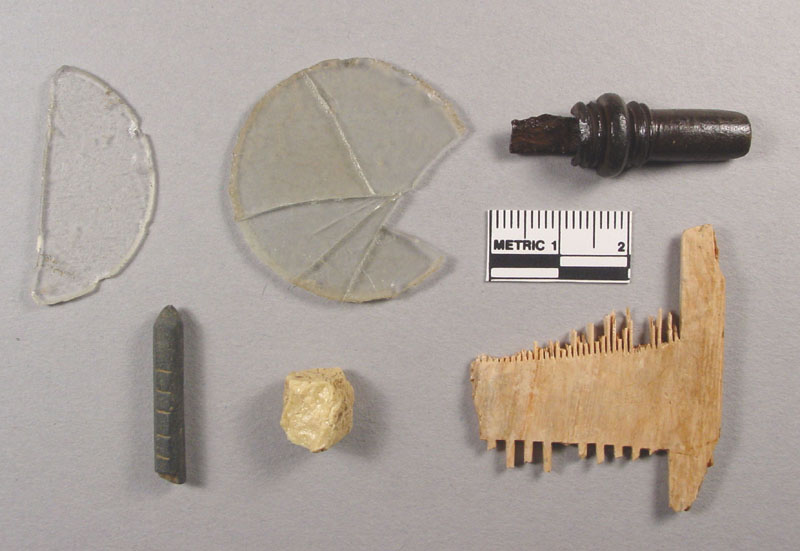
|
|
Fragments from eyeglass lenses, a penknife for a
“penner,” a slate pencil, a fragment of sulfur, and
a bone comb.
Click to enlarge.
|
Literacy was essential for reading the Bible and conducting business, and every Connecticut town was required by
law to provide schools and teachers for boys and girls. Literacy-related artifacts include eyeglass lenses, a
slate pencil fragment and the penknife from a travel pen-case or inkwell, sometimes called a “penner.” The
blade was used to cut the nibs for quill pens and the bone handle screwed into a horn inkwell. The slate pencil
would have been used with a slate board.
The sulfur (or brimstone, as it was called) from the site could have been
used in different ways. Mixed with lard, it was used to treat skin ailments. When burned, sulfur was used to
fumigate cider barrels to kill mold. The bone hair comb from the site has both fine and coarse teeth.
The fine teeth were used to help extract nits and lice from the scalp.
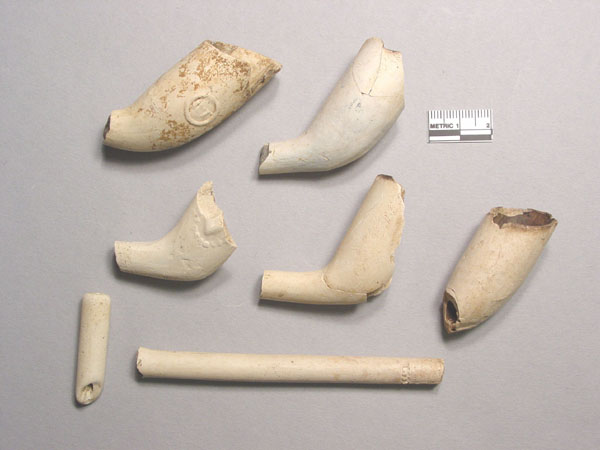
|
|
Kaolin tobacco pipe bowls and stems. Click to enlarge.
|
Over 5,000 kaolin tobacco pipe fragments were recovered from the site. A few of the pipe bowls
had the maker’s mark “RT,” which is likely associated with English pipe maker Robert Tippet III,
who made pipes during the period 1713-1720.

|
|
Top row is a lead token, 1723 George I Irish
halfpenny, and a 1722 Rosa Americana
halfpenny. Bottom row is a small French
Liard minted 1655-1658 and a 1733 George II
younghead halfpenny.
Click to enlarge.
|
Nine coins were recovered, all of low denomination. The 18th century was a period marked by
continual shortages of coins and their true value rested on people’s confidence in the purity of the metal content.
A lead token was also found. The use of lead tokens is poorly understood; they may have been issued by private
businesses to workmen. They are most commonly found at sites near large ports. Coins include a 1723 George I
Irish copper halfpenny, which were consequently rejected by the Irish and then unloaded on the colonies.
The 1722 George I copper Rosa Americana halfpenny was minted especially for use in the colonies. The bottom left
coin is a very worn French Louis XIV copper liard minted between 1655-1658 and the bottom right is a 1733 George II
copper younghead halfpenny.
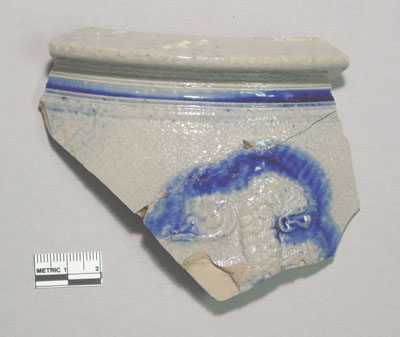
|
|
Sherds from a Westerwald salt-glazed
stoneware chamber pot.
Click to enlarge.
|
Several large sherds of a salt-glazed stoneware
chamber pot
from the Westerwald region of what is today
Germany were found in the cellar.
There is an applied molded lion and blue cobalt decoration. By the Revolutionary War these types of
ceramics were no longer being imported into the colonies.
Return to Main Page







